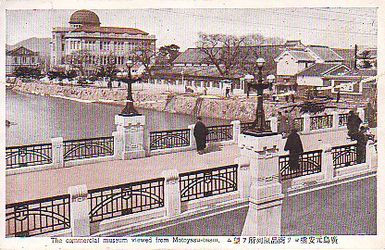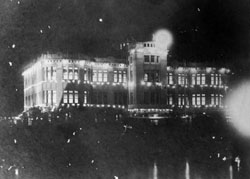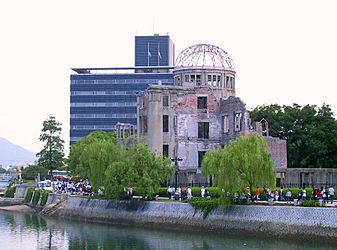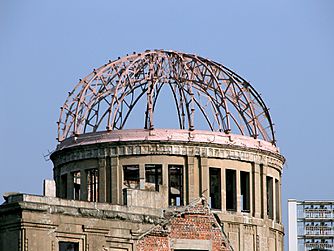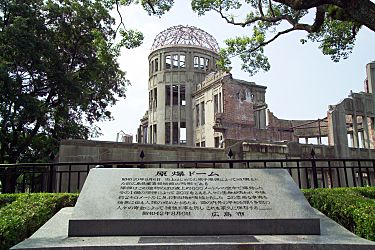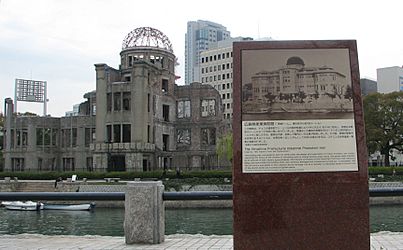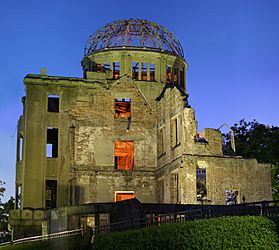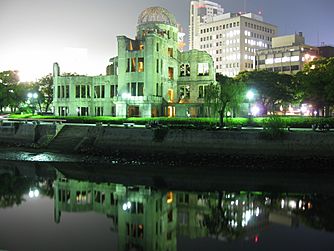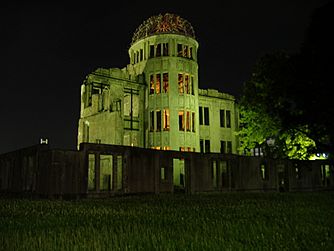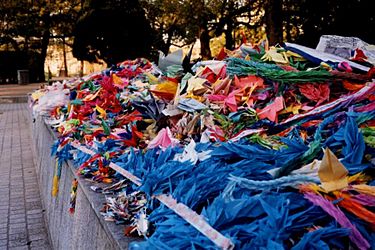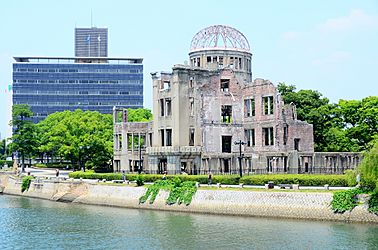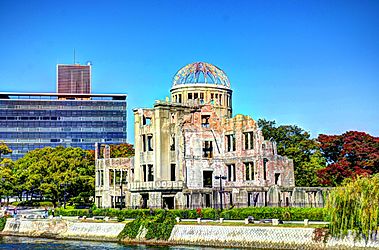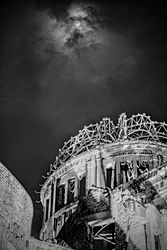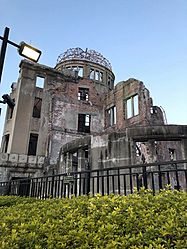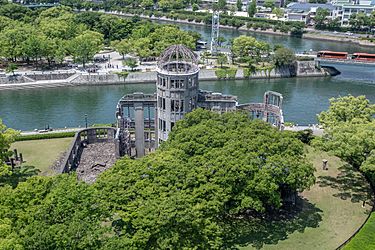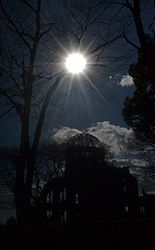Hiroshima Peace Memorial facts for kids
| UNESCO World Heritage Site | |
|---|---|
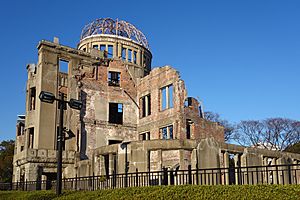
Ruin of Hiroshima Prefectural Industrial
Promotion Hall |
|
| Location | Hiroshima, Japan |
| Criteria | Cultural: vi |
| Inscription | 1996 (20th Session) |
The Hiroshima Peace Memorial, also known as the Genbaku Dome or A-Bomb Dome, is a very important building in Hiroshima, Japan. It's part of the Hiroshima Peace Memorial Park. In 1996, it became a UNESCO World Heritage Site.
This building is special because it was the only one left standing near where the first atomic bomb exploded in World War II. It reminds us of the terrible power of nuclear weapons. It also honors the more than 140,000 people who lost their lives in the bombing.
Contents
The Original Building
The building was designed by a Czech architect named Jan Letzel. It was finished in April 1915. It had a unique dome shape at the top.
It was first called the Hiroshima Prefectural Commercial Exhibition. People used it for art shows and educational displays. Later, its name changed a few times. By 1933, it was known as the Hiroshima Prefectural Industrial Promotion Hall. It was in a busy part of the city, right by the Aioi Bridge.
The Atomic Bombing
During World War II, on August 6, 1945, something terrible happened. The first atomic bomb ever used in war was dropped on Hiroshima. It exploded at 8:15 in the morning.
The bomb was incredibly powerful. It was like 15,000 tons of TNT exploding. The city of Hiroshima was almost completely destroyed. Hiroshima was chosen because it was an important port. It also had a large number of military personnel.
The bomb was meant for the Aioi Bridge. But it missed by about 240 meters (787 feet). It exploded right over the Shima Hospital. This hospital was very close to the Genbaku Dome.
The center of the blast was only 150 meters (492 feet) away from the Dome. Everyone inside the building died instantly.
Even though the bomb was so close, the building kept its shape. This was because the explosion happened almost directly above it. The building's strong vertical columns helped it stand up. Parts of its concrete and brick walls also stayed intact. The building was also designed to resist earthquakes, which made it very strong.
Why the Dome Was Saved
After the bombing, the Genbaku Dome was one of the few buildings left. Its stone and steel structure helped it survive. People started calling it the "A-Bomb Dome."
At first, there were plans to tear it down. But much of the building was still standing. This made people think about what to do. Some people wanted to remove it. Others wanted to keep it as a reminder of the bombing. They saw it as a symbol of peace.
In the end, the city decided to save the building. It became a permanent memorial.
From 1950 to 1964, the Hiroshima Peace Memorial Park was built around the Dome. In 1966, the city officially decided to keep the Genbaku Dome forever. It is now the main landmark in the park.
Over the years, the building started to wear down. People worked hard to raise money to fix it. The mayor of Hiroshima, Shinzo Hamai, even collected money on the streets. The first repairs were finished in 1967. More small repairs happened later to keep it stable.
Today, the Genbaku Dome looks almost exactly as it did after the bombing. Only small changes have been made to keep it safe. A metal frame was put inside to make it more stable.
A UNESCO World Heritage Site
In December 1996, the Genbaku Dome became a UNESCO World Heritage Site. This means it's recognized as a very important place for all of humanity.
It was chosen for a few reasons. It survived a huge destructive force, the atomic bomb. It's also a reminder of the first time nuclear weapons were used on people. Most importantly, it stands as a powerful symbol of peace.
Some countries, like China and the United States, had concerns. China worried it might make people forget about Japan's actions in the war. The United States felt it didn't show enough historical context. But despite these concerns, the Dome was added to the list.
Gallery
See also
 In Spanish: Monumento de la Paz de Hiroshima para niños
In Spanish: Monumento de la Paz de Hiroshima para niños
- Hiroshima Witness
- Kaiser Wilhelm Memorial Church
- St. Nicholas Church, Hamburg
- Coventry Cathedral
- Tourism in Japan
- List of World Heritage Sites in Japan
- The Ribbon International




